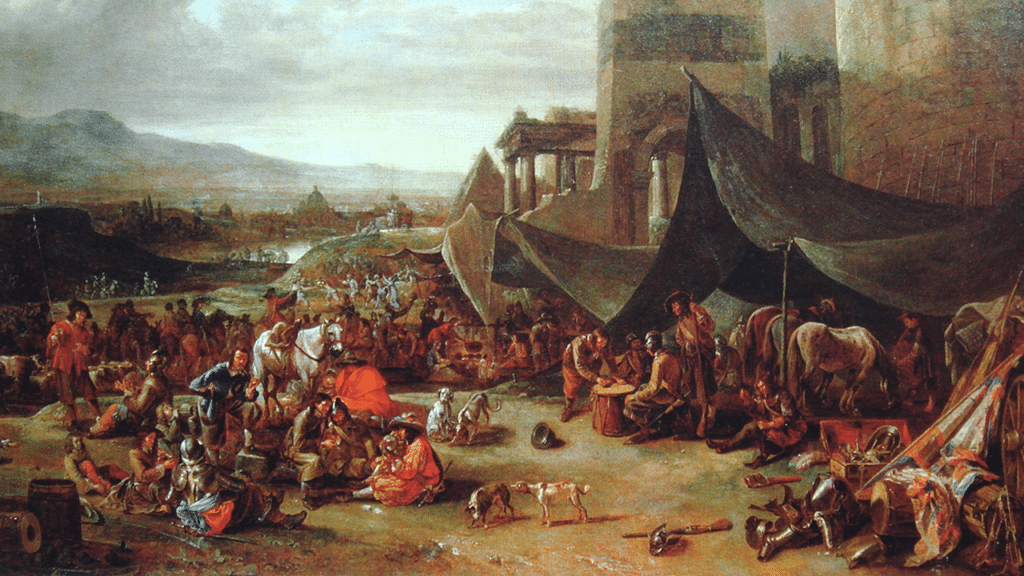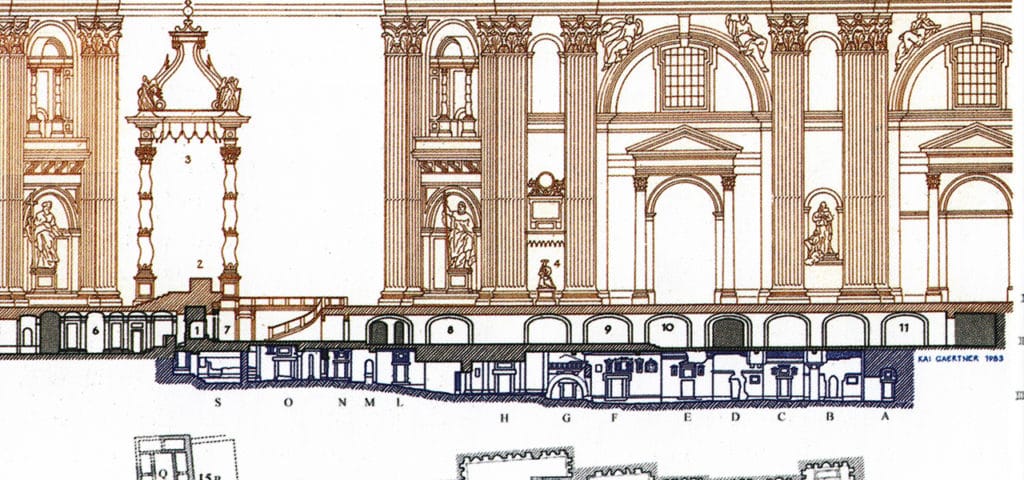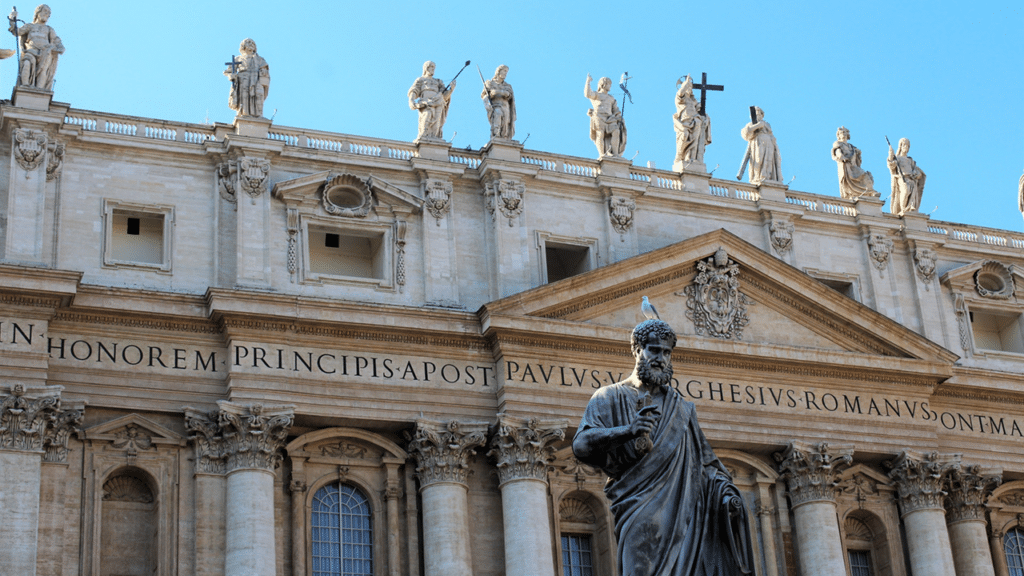The Vatican is one of the most mysterious places in the world, and it has a lot to hide. One of these secrets are underground tunnels that are said to lead from its basement all the way into Castel Sant’Angelo. It’s not surprising that people would want to know what’s down there – after all, who knows what could be lurking beneath this holy ground?
One of the most fascinating sites in Italy is St. Peter’s Basilica, an architectural masterpiece located in Vatican City. Many people are surprised to find out that there is not only one basilica built on this site, but two! The first basilica was commissioned by Emperor Constantine I and was completed in AD 324.
This beautiful structure has been rebuilt twice since then, once after a devastating fire caused by lightning that struck the dome during the papal conclave of 1823-1824 and again after it sustained heavy damage due to bombs dropped during World War II. But what many people don’t know about St Peter’s Basilica is its secret underground passage which leads from Michelangelo’s tomb to the second basilica which sits beneath the first.
This secret passage was used by the popes for centuries as a way to get from one basilica to the other without being seen by the public. It is said that even Michelangelo, who designed and built the tombs of several popes, knew about this hidden passage and made sure his tomb was located in such a way that it would be the entrance to the passage.
Pope Alexander VI Escaped
The tunnel starts in the Pope’s private chambers and is accessed by a staircase hidden behind a bookcase. It leads to another set of stairs that descend into darkness, but not before they pass through an arched hall with two columns on either side. The tunnel was built in 1492 when Alexander VI became aware of plots against his life; he wanted to escape the Vatican Palace without being seen or followed. He expanded it just two years later in order to flee for his life when French troops stormed Rome during the Italian Wars of 1494-1559, which saw France make several unsuccessful attempts at capturing Italy from Spain.
The tunnel was left to crumble for centuries, closed off to the public. But in 2000 it was renovated and temporarily reopened; now, every summer, visitors can walk between its huddled walls just like the fleeing Pope did 500 years ago. The experience is eerie but also fascinating, offering a unique glimpse into history. It’s no wonder the tunnel was such a well-kept secret, as it passes through several rooms and corridors that are still used today. The path is narrow in some places, forcing you to turn sideways or even crawl on your hands and knees; other parts of the passageway aren’t much wider than an air vent, so there’s very little space to move around. Claustrophobics need not apply!
Along the way, you can see the original frescoes and graffiti that were left by those who used the tunnel in centuries past. There are even a few small chambers where people would have hidden while waiting for the Pope to pass. The whole experience is definitely one-of-a-kind and provides a unique perspective on the history of the Vatican. If you’re interested in learning more about this fascinating piece of history, be sure to visit during summertime when the tunnel is open to tourists. It’s definitely worth the trip!
The Legend of Pope Clement VII and the Sack of Rome: A Journey Through History

The Sack of Rome was historically one of the most infamous events in European history. An army of 35,000 men led by Charles V, the Holy Roman Emperor, descended on Rome and destroyed everything in their path. The Pope himself had to flee for his life through a secret tunnel. This event is often seen as a turning point in papal history, as it showed the vulnerability of the papacy and its lack of military power.
In 1527, Clement VII was newly crowned as Pope. He had inherited a difficult situation – his predecessor, Leo X, had been very unpopular due to his lavish lifestyle and high taxes. The people of Rome were angry and they were looking for a new leader. This was the perfect situation for an invasion – Rome had no troops to defend it, and Charles V would have been welcomed with open arms by the people who were so unhappy with their previous Pope.
When Clement VII’s forces met up with Charles V’s army outside of Rome, they were quickly defeated. The city itself came under attack, and the Pope was forced to flee. He made his way to the Vatican Hill, where he had a small group of loyal followers waiting for him. Unfortunately, the Vatican Hill was also under attack and there was no safe place for the Pope to go.
At this point, Clement VII made a daring decision – he would escape from Rome through a secret tunnel. This was the only way to get out of the city safely, and he had no other options. He crawled on his hands and knees through the darkness until it opened up into a crypt far beneath St. Peter’s Basilica – which is still in use today!
The Sack of Rome was one of the most devastating moments in papal history. It showed the world that the Pope was not invincible, and it opened up a new era of vulnerability for the papacy. However, Clement VII’s actions during these difficult times show his strength and resilience. He made a difficult decision to flee Rome, but he did so in order to protect his people and save his own life. He was able to escape the Sack of Rome and continue his reign as Pope – a decision that would have a lasting impact on the history of the papacy.
The Scavi: The Ancient Cemetery Beneath the Basilica of St. Peter

Christianity has not always been a dominant religion in Rome. For centuries, paganism was the primary belief system of the ancient Romans. There have been many discoveries that point to Christianity being practiced in ancient Rome, one of which is a cemetery found beneath the Basilica of St. Peter in 1980.
Human remains and other artifacts from this era were found when they began excavating an area near the altar for its restoration project.
The Vatican Museum opened a section of the underground cemetery to tours in 2010. The Basilica of St. Peter was built around A.D. 349, so this part of the church is over 1500 years old. It is believed to have been a pagan necropolis, or city of the dead.
One of the Vatican’s most important archaeological sites in Europe. The necropolis, known as “scavi,” is one of the earliest Christian art locations in all of Europe.
The Vatican Necropolis, or “scavi,” is an ancient cemetery located beneath the Basilica of St. Peter in Rome, Italy. This fascinating archaeological site contains some of the earliest Christian art in existence and attracts visitors from all over the world.
One of the highlights of a visit to the scavi is seeing the Tomb of St. Peter, which is located in the Grotte Vaticane (Vatican Grotto). According to tradition, this is the place where St. Peter was buried after his death. The tomb itself is a simple limestone block with a cross carved into it, but it is said to have miraculous powers.
The scavi also has an archaeological museum called Museo dei Fori Imperiali (Imperial Forums Museum). The museum is housed in the Palazzo dei Conservatori, which was originally built as a papal palace in the 16th century.
If you’re interested in archaeology or early Christian art, then be sure to visit the Vatican Necropolis (the scavi) on your next trip to Rome! It’s one of the most fascinating and important archaeological sites in all of Europe. The necropolis, known as “scavi,” is one of the earliest Christian art locations in all of Europe and contains some of the oldest Christian art in existence.
The Vatican: Basilica of St. Peter, Museum and More Travel Tips

The Vatican is a stunningly beautiful place to visit and explore. The Basilica of St. Peter, Museum, and more are all on the grounds of the Vatican City in Rome, Italy. With so much history on display, it can be hard to know where to start your tour!
- Basilica of St. Peter: The Basilica of St. Peter is the largest church in Christendom and one of the most popular tourist destinations in Rome. Construction on this beautiful basilica began in 326 AD and continued for over a century! The current structure was completed in 1626 by Bernini. Admission to the basilica includes a guided tour and is open Monday-Saturday from 08:00 to 18:30 (last admission at 17:45) and Sunday from 09:00 to 18:00. The basilica closes for an hour in the middle of the day, too!
- Museum of the Basilica of St. Peter: This museum features artifacts from the early days of Christianity, including several relics from St. Peter himself! The museum is located in a section of the Basilica that was added during construction in 1934 to house the tomb Pope Pius XI had consigned for himself and future popes. It’s closed Mondays but open Tuesday-Sunday from 09:00 to 16:45 (last admission at 16:00).
- Sistine Chapel: The Sistine Chapel is one of the most famous and iconic sites in the Vatican. Commissioned by Pope Julius II, Michelangelo spent four years painting the chapel’s ceiling! Admission includes a guided tour and is open Monday-Saturday from 09:00 to 18:00 (last admission at 17:15) and Sunday from 09:00 to 18:45 (last admission at 17:30).
- Vatican Gardens Tour & Art Museum Visit The Vatican Garden tour includes a visit to the Belvedere Courtyard, which features lovely views of St. Peter’s Basilica. Tip! Take advantage of your museum ticket and the time your visit to the Vatican Gardens right before you enter St. Peter’s Basilica for a closer look! The gardens are open Monday-Saturday from 09:00 to 18:30 (last admission at 17:45) and Sunday from 08:00 to 19:15 (last admission at 18:30).
- Vatican City Tour Bus & The Vatican Museums This hop-on, a hop-off bus tour of the Vatican City is a great way to see all the sights! The buses make frequent stops at key locations around the city, so you can get on and off as often as you like. Admission to The Vatican Museums is included with your ticket purchase.
So there you have it, some great travel tips to help you plan your trip! If you’re planning on making full use of your Vatican Museum ticket (and why wouldn’t you?), check out our post that outlines the four different parts of the museum.
If you are ever in Rome and want to visit St Peter’s Basilica, be sure to also check out the Vatican City Secret Underground Passage! It’s one of the most fascinating sites in Italy.
